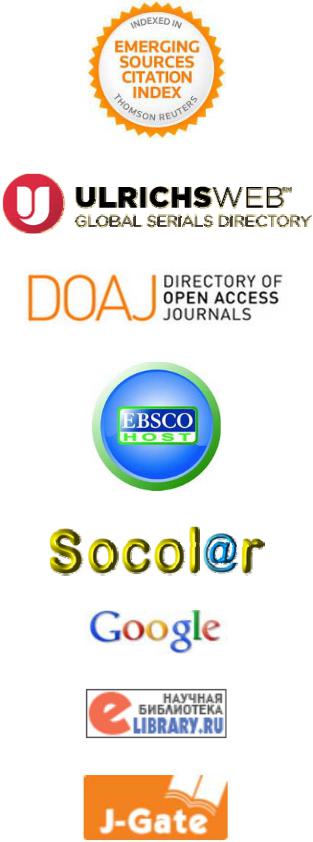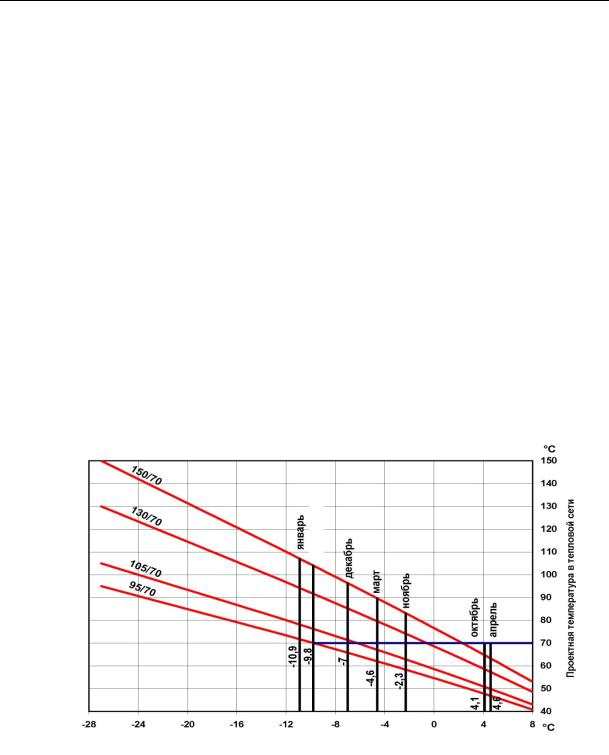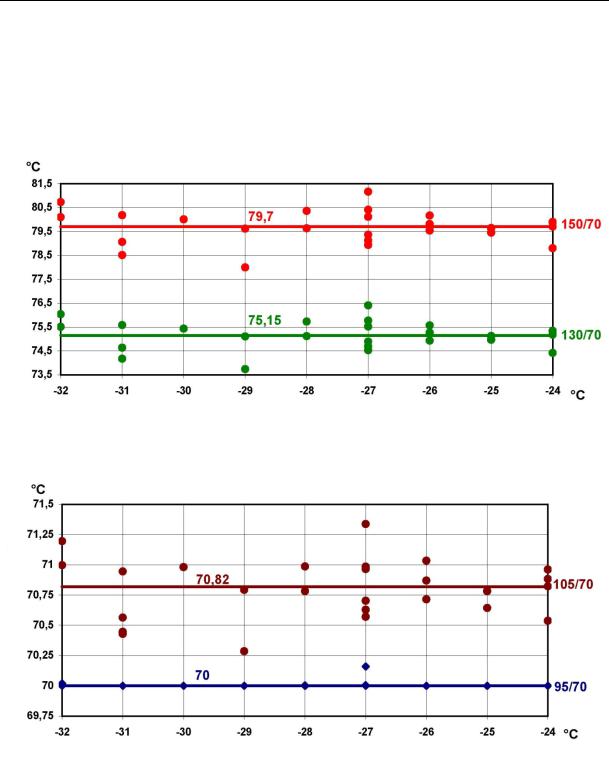
Russian Journal of Building Construction and Architecture
.pdfRUSSIAN JOURNAL
OF BUILDING
CONSTRUCTION AND ARCHITECTURE

The journal is indexed/abstracted in:
Web of Science Core Collection
(Emerging Sources Citation Index)
(Thomson Reuters), USA
Ulrich's Periodicals Directory
(Bowker), USA
DOAJ
(Lund University), Sweden
Academic Search Complete
(EBSCO), USA
SOCOLAR
(China Educational Publications Import and Export Corporation –– CEPIEC), China
Google Scholar
(Google), USA
E-Library
(ООО «РУНЭБ»), Russia
J-Gate
(Informatics Ltd), India
ISSN 2542-0526
RUSSIAN JOURNAL
OF BUILDING CONSTRUCTION
AND ARCHITECTURE
N 4 (48)
BUILDING STRUCTURES, BUILDINGS AND CONSTRUCTIONS
BASES AND FOUNDATIONS, UNDERGROUND STRUCTURES
HEAT AND GAS SUPPLY, VENTILATION, AIR CONDITIONING, GAS SUPPLY AND ILLUMINATION
BUILDING MATERIALS AND PRODUCTS
TECHNOLOGY AND ORGANIZATION OF CONSTRUCTION
DESIGNING AND CONSTRUCTION OF ROADS, SUBWAYS, AIRFIELDS, BRIDGES AND TRANSPORT TUNNELS
BUILDING MECHANICS
THEORY AND HISTORY OF ARCHITECTURE, RESTORATION AND RECONSTRUCTION OF HISTORICAL
AND ARCHITECTURAL HERITAGE
ARCHITECTURE OF BUILDINGS AND STRUCTURES. CREATIVE CONCEPTIONS OF ARCHITECTURAL ACTIVITY
CITY PLANNING, PLANNING OF VILLAGE SETTLEMENTS
Voronezh 2020

Russian Journal
of Building Construction and Architecture
Periodical scientific edition
Published since 2009 |
Comes out 4 times per annum |
|
|
|
|
Founder and publisher: Voronezh State Technical University.
The territory of distribution — Russian Federation.
The articles are reviewed and processed with the program ANTIPLAGIARISM. This publication cannot be reprinted without the prior permission of the publisher, references are obligatory.
Previous name: «Scientific Herald of the Voronezh State University of Architecture and Civil Engineering. Construction and Architecture».
EDITORIAL BOARD
Editor-in-Chief: Melkumov V. N., D. Sc. in Engineering, Prof.,
Voronezh State Technical University
Boldyrev А.М., Corresponding Member of the Russian Academy of Architecture and Engineering Science, D.Sc. in Engineering, Prof., Voronezh State Technical University, Russia
Bondarev B. А., D. Sc. in Engineering, Prof., Lipetsk State Technical University, Russia
Gagarin V. G., Corresponding Member of RAABS, Moscow State University of Civil Engineering, Russia
Gelfond А. L., Corresponding Member of the Russian Academy of Architecture and Construction Science, D. Sc. in Architecture, Nizhniy Novgorod State University of Architecture and Construction, Russia
Enin A. Ye., PhD in Architecture, Prof., Voronezh State Technical University, Russia
Karpenko N. I., Academician of RAABS, Research Institute of Building Physics (NIISF RAABS), Russia
Kirsanov М. N., D.Sc. in Physics and Mathematics, Professor (National Research University “Moscow Power
Engineering Institute”)
Kolchunov V. I., Academician of RAABS, Southwest State University, Kursk, Russia
Ledenyev V. I., D. Sc. in Engineering, Prof., Tambov State Technical University, Russia
Lyahovich L. S., Academician of RAABS, Tomsk State University of Architecture and Building, Russia
Mailyan L. R., D. Sc. in Engineering, Prof., Don State Technical University, Rostov, Russia
Osipova N.N., D. Sc. in Engineering, Yury Gagarin Saratov State Technical University, Russia
Panibratov Yu. P., Academician of RAABS, Saint Petersburg State University of Architecture and Civil Engineering, Russia
Podolsky Vl.P., D. Sc. in Engineering, Prof., Voronezh State Technical University, Russia (Dep. of the Editor-in-Chief)
Suleymanov А.М., D. Sc. in Engineering, Prof., Kazan State University of Architecture and Engineering, Russia
Fyedorov V. S., Academician of RAABS, Moscow State University of Railway Engineering, Russia
Fedosov S. V., Academician of RAABS, Moscow State University of Civil Engineering, Russia
Chernyshov Ye. M., Academician of RAABS, Voronezh State Technical University, Russia
Shubenkov М. V., Academician of the Russian Academy of Architecture and Construction Science, D. Sc. in Architecture, Prof., Моscow Institute of Architecture (State Academy), Russia Asanowicz Alexander, Prof., Dr. of Sn., Technical University of Bialystok, Poland
Figovsky Oleg L., Prof., Dr. of Sn., Member of EAS, Israel Korsun V. I., D. Sc. in Engineering, Prof., The Donbas National Academy of Civil Engineering and Architecture, Ukraine
Nguyen Van Thinh, Prof., Dr. of Sn., Hanoi University of Architecture, Vietnam
Editor: Kotlyarova E. S. Translator: Litvinova O. A. Executive secretary: Aralov E. S.
Publication date 25.12.2020. Format 60×84 1/8. Conventional printed sheets 10,5. Circulation 500 copies. Order 209. Number of the certificate of registration of the media ПИ № ФС 77-67855
Issued by the Federal Service for Supervision of Communications, Information Technology, and Mass Media (Roskomnadzor)
Price is subject to change
THE ADDRESS of EDITORIAL AND THE PUBLISHER OFFICE:
room2230,84 20-letiya Oktyabrya str., Voronezh, 394006, Russian Federation Tel./fax: (473)2-774-006; e-mail: vestnik_vgasu@mail.ru
Published in Printing Office of Voronezh State Technical University 84 20-letiya Oktyabrya str., Voronezh, 394006, Russian Federation
© Voronezh State Technical University, 2020
Issue № 4 (48), 2020 |
ISSN 2542-0526 |
|
|
|
|
CONTENTS |
|
HEAT AND GAS SUPPLY,VENTILATION,AIR CONDITIONING, |
|
GAS SUPPLY AND ILLUMINATION.............................................................................................. |
6 |
Kitaev D. N., Kurnosov A. T., Hasanov Z. S., Kharin S. O. |
|
Calculation of Annual Water Temperatures in Heat Networks ................................................. |
6 |
Melkumov V. N., Kuznetsova G. A., Panin A. V., Panov M. Ya. |
|
Using Air Exchange to Reduce the Probability of Spreading Coronavirus Infection.............. |
14 |
BUILDING MATERIALS AND PRODUCTS.................................................................................. |
21 |
Kumitsky B. M., Savrasova N. A., Nikolaichik A. V., Aralov E. S. |
|
Rheological Modeling of the Stress-Strain State in Flat Compaction |
|
of Composite Materials............................................................................................................ |
21 |
Fedosov S. V., Lazarev A. A., Toropova M. V., Malichenko V. G. |
|
Equations for the Operating Temperature of Thermosensitive Elements of Fire Detectors |
|
Embedded in a Concrete Block................................................................................................ |
31 |
DESIGNING AND CONSTRUCTION OF ROADS,SUBWAYS,AIRFIELDS,BRIDGES |
|
AND TRANSPORT TUNNELS ..................................................................................................... |
39 |
Nosov S. V. |
|
Alternative to Superpave System in the Formation of Regional Road R&D Institute ............. |
39 |
ARCHITECTURE OF BUILDINGS AND STRUCTURES. |
|
CREATIVE CONCEPTIONS OF ARCHITECTURAL ACTIVITY ................................................... |
50 |
Podvalny S. L., Sotnikova О. А., Zolotukhina Ia. A. |
|
Concept of Improvement (Using the Example of a Key Public Space |
|
“Alley of Architects”, Voronezh)............................................................................................. |
50 |
CITY PLANNING,PLANNING OF VILLAGE SETTLEMENTS ..................................................... |
64 |
Gilev S. A. |
|
Architectural Problems of Implementation of Residential Development in Voronezh |
|
(Issues of Urban Development)................................................................................................ |
64 |
Ilyichev V. А., Kolchunov V. I., Bakaeva N. V. |
|
Urban Planning Architecture.................................................................................................... |
76 |
INSTRUCTIONS TO AUTHORS................................................................................................... |
89 |
5

Russian Journal of Building Construction and Architecture
HEAT AND GAS SUPPLY,VENTILATION,AIR CONDITIONING,
GAS SUPPLY AND ILLUMINATION
DOI 10.36622/VSTU.2020.48.4.001
UDC 697.341
D. N. Kitaev1, A. T. Kurnosov2, Z. S. Hasanov3, S. O. Kharin4
CALCULATION OF ANNUAL WATER TEMPERATURES IN HEAT NETWORKS
Voronezh State Technical University1, 2, 3, 4
Russia, Voronezh
1Cand. tech. Sciences, Assoc. Department of Heat and Gas Supply and Oil and Gas Business, tel.: +79066710284, e-mail: dim.kit@rambler.ru
2Cand. tech. Sciences, Assoc. Department of Heat and Gas Supply and Oil and Gas Business, tel.: +79066710284, e-mail: teplosnab_kaf@vgasu.vrn.ru
3Cand. tech. Sciences, Assoc. Department of Heat and Gas Supply and Oil and Gas Business, tel.: +79066710284, e-mail: teplosnab_kaf@vgasu.vrn.ru
4Graduate student. Department of Heat and Gas Supply and Oil and Gas Business, tel.: +79003046251, e-mail: kharin_sergey.93@mail.ru
Statement of the problem. When carrying out design calculations of heating networks, in particular, calculating the thickness of thermal insulation structures, thermal elongations during thermal expansion, standard losses during the transportation of thermal energy to the consumer, it is often necessary to use the design values of the average annual temperatures of the coolant indicated depending on the design temperature schedule in modern standards [18, 24]. According to a number of researchers, the recommended values of average annual coolant temperatures do not take into account climatological characteristics and their use can lead to significant errors [1––3]. In addition, recommended temperatures have changed over the past few years and there has been a contradiction in regulations. Currently, there are no substantiated values of the design average annual temperatures of the heat carrier in the heating network, taking into account climatological data.
Results. For the design temperatures of the temperature graphs of the central quality regulation 95 / 70––150 / 70 for the settlements of the territory of the central federal district, presented in the latest edition of building climatology, the values of the average annual water temperatures in the supply line of the heating network have been determined. The averaged values of temperatures for the considered temperature graphs are obtained.
Conclusions. For most of the temperature graphs, significant discrepancies have been established between the calculated values of the average annual water temperatures in the heating network and those recommended by the JV “Heating Networks” of the latest edition. The maximum difference is observed for the 150/70 graph and is 12 ° C.
Keywords: heating network; temperature graph; average annual temperature of the heating medium.
Introduction. While designing heating networks, one of the important factors is the average annual temperature of the heat carrier. It is necessary for calculating the heat-insulating
© Kitaev D. N., Kurnosov A. T., Hasanov Z. S., Kharin S. O., 2020
6
Issue № 4 (48), 2020 |
ISSN 2542-0526 |
structures of the network, identifying the heat losses during the transportation of the heat carrier involved in the formation of the heat energy tariff [5, 8]. This indicator is necessary while creating promising programs and schemes for the development of heating networks and sources of heat generation, energy-saving strategies at heating network and generating enterprises [20––22]. Improving the accuracy of calculations in the design of heat supply systems is an urgent task.
In engineering practice, it is commonly necessary to employ the recommended values of the average annual temperatures for the supply and return lines of the heating network [14, 16]. In the guidelines for the design of heating networks, similar values for the supply main line are indicated depending on the design values of the temperature schedules of quality control. Average annual values of the coolant temperature are calculated as weighted averages over the monthly average values of the coolant temperature in the pipeline, which, in turn, are identified using the temperature schedule in compliance with the monthly average values of the outside air temperature [19, 23]. Such calculations are time-consuming and are thus neglected using the rules recommended by the guideline [9, 10].
The objective of the study is to identify the design values of the average annual water temperatures in the supply line of the heating network for the possible range of the employed temperature graphs of the central quality control for the heating load considering the latest climatic data for the area of the Central Federal District.
1. Identifying the average annual water temperatures in the network. With a high-quality control mode of the heating network and a heating schedule, the temperature of the heat carrier in the supply pipeline of the heating network 1 under conditions of an arbitrary outside air temperature is given by the formula [4.17]:
|
|
|
|
|
|
tв tн |
1 |
|
|
tв tн |
|
|
|
|||
|
|
|
|
|
|
|
|
|
|
|
|
|
||||
|
|
t |
|
|
t |
1 n |
|
|
, |
(1) |
||||||
1 |
в |
|
|
|
|
|
|
|||||||||
|
|
|||||||||||||||
|
|
пр.о |
|
в |
|
1о |
|
пр.о |
|
|
|
|||||
|
|
|
|
|
|
tв tр.о |
|
|
tв tр.о |
|
|
|||||
where tв is the design air temperature in facilities, ºС; |
tн |
is the arbitrary temperature of the |
||||||||||||||
outside air, ºС; tр.о |
is the design temperature for the heating design, ºС; 1о |
is the water tem- |
||||||||||||||
perature in the main pipeline of the network at tр.о , ºС; пр.о is the average water temperature in the heating device, ºС given by the formula пр.о 12 см.о 2о ; см.о , 2о is the water
temperature in the user’s setup and in the reverse pipeline of the heating supply system at the design parameters of the heating system, ºС; n is an empirical index depending on the type of a heating device and its installation scheme.
7

Russian Journal of Building Construction and Architecture
The average annual water temperature is given by the formula:
1год |
1ini |
, |
(2) |
|
nоп nноп |
||||
|
|
|
where 1i is the temperature of a heat carrier in the main pipeline at the average temperature of the outside air of a corresponding month, ºС; ni is the operation period of the network in the i-th month; nоп,nноп are heating and non-heating seasons respectively.
For the climatic conditions of the city of Kashira, Moscow region, a heating temperature schedule was designed for high-quality regulation of the heating network considering the installation of modern heating devices in buildings [7, 11, 13]. The calculations were performed for the design temperatures of the supply pipeline 150, 130, 105, 95 °C. The average monthly values of the water temperatures in the network were identified considering the average monthly values of the outside air temperatures in each month of the heating season according to the latest edition of the JV “Construction Climatology”. In Fig. 1 there are the considered temperature graphs considering the fracture temperature of 70 °C [6, 12, 15].
|
|
|
|
|
|
|
|
|
|
|
temperature of the heating network |
||
|
January |
February |
|
|
|
|
|
|
|
|
|
||
|
December |
|
|
|
|
|
|
|
|
||||
|
|
|
|
|
November |
|
|
|
|
||||
|
|
|
|
|
|
|
|||||||
|
|
|
March |
|
|
|
|
|
|||||
|
|
|
|
|
|
|
|
||||||
|
|
|
|
|
|
|
October |
|
April |
||||
|
|
|
|
|
|
|
|
|
|||||
|
|
|
|
|
|
|
|
||||||
|
|
|
|
|
|
|
|
|
|
|
|
||
|
|
|
|
|
|
|
|
|
|
|
|
|
Design |
Design temperature of the outside air
Fig. 1. Temperature graphs for the main pipe of the heating network
Fig. 1 also shows the average temperatures of the months of the heating period allowing one to conclude on the average temperature in the supply line of the heating network.
2. Average annual water temperatures for the territory of the Central Federal District.
Similarly the average annual values of water temperatures in the supply line of the heating
8
Issue № 4 (48), 2020 |
ISSN 2542-0526 |
network for the settlements of the Central Federal District (CFD) were identified whose climatic data are in the latest edition of JV “Construction Climatology”.
About 27 % of the total population of the Russian Federation lives on the territory of the Central Federal District and largely in cities (about 82 %). Such indicators make district heating in this area critically important. The Central Federal District includes 18 constituecies of the Russian Federation. The current Set of Guidelines (СП) on climatology contains information on 28 settlements included in the Central Federal District. According to climatology data, the calculated outdoor air temperature tр.о is in the range from –24 to –32 °С and the heating season n is from 190 to 230 days.
Table 1 presents the values of the average annual temperatures of the supply line of the heating network for the capitals of the subjects of the Russian Federation located in the territory of the Central Federal District for the corresponding temperature schedule.
Table 1
Average annual temperatures of the supply line of the heating network
Settlement |
|
Design temperature graphs |
|
tр.о °С |
n, days |
||
|
|
|
|
||||
95/70 |
105/70 |
130/70 |
150/70 |
||||
|
|
|
|||||
|
|
|
|
|
|
|
|
Voronezh |
70 |
70.961 |
75.337 |
79.9 |
|
190 |
|
|
|
|
|
|
|
|
|
Kursk |
70 |
70.883 |
75.325 |
79.886 |
–24 |
194 |
|
|
|
|
|
|
|
||
Bryansk |
70 |
70.822 |
75.177 |
79.71 |
199 |
||
|
|||||||
|
|
|
|
|
|
|
|
Belgorod |
70 |
70.538 |
74.415 |
78.803 |
|
189 |
|
|
|
|
|
|
|
|
|
Smolensk |
70 |
70.643 |
74.964 |
79.456 |
|
209 |
|
|
|
|
|
|
–25 |
|
|
Moscow |
70 |
70.784 |
75.107 |
79.626 |
205 |
||
|
|
|
|
|
|
|
|
Oryol |
70 |
70.782 |
75.125 |
79.648 |
|
199 |
|
|
|
|
|
|
|
|
|
Tula |
70 |
70.715 |
74.93 |
79.54 |
–26 |
203 |
|
|
|
|
|
|
|
||
Ryazan |
70 |
71.034 |
75.566 |
80.173 |
202 |
||
|
|||||||
|
|
|
|
|
|
|
|
Lipetsk |
70 |
70.629 |
74.686 |
79.126 |
|
197 |
|
|
|
|
|
|
|
|
|
Vladimir |
70 |
70.985 |
75.522 |
80.12 |
–27 |
209 |
|
|
|
|
|
|
|
||
Kaluga |
70 |
70.571 |
74.528 |
78.938 |
208 |
||
|
|||||||
|
|
|
|
|
|
|
|
Tambov |
70 |
70.703 |
74.887 |
79.365 |
|
197 |
|
|
|
|
|
|
|
|
|
Tver |
70 |
70.286 |
73.734 |
77.994 |
–29 |
212 |
|
|
|
|
|
|
|
||
Ivanovo |
70 |
70.793 |
75.104 |
79.623 |
214 |
||
|
|||||||
|
|
|
|
|
|
|
|
Kostroma |
70 |
70.446 |
74.171 |
78.513 |
–31 |
216 |
|
|
|
|
|
|
|
||
Yaroslavl |
70 |
70.429 |
74.169 |
78.511 |
217 |
||
|
|||||||
|
|
|
|
|
|
|
|
9

Russian Journal of Building Construction and Architecture
Fig. 2 shows the values of the average annual water temperatures in the supply pipe of the heating network for temperature graphs 150/70 and 130/70 and in Fig. 3 –– for 105/70 and 95/70. Figures 2 and 3 also show the average temperatures for the corresponding temperature graphs.
Temperature in the heating network
Design temperature of the outside air
Fig. 2. Design values of the annual water temperatures in the supply pipeline for the graphs 150/70 and 130/70
Temperature in the heating network
Design temperature of the outside air
Fig. 3. Design values of the average annual water temperatures in the supply pipeline for the graphs 105/70 and 95/70
3. Analysis of the results. The data in Table 1 and Fig. 2 and 3 enable us to make the following conclusions. For almost all of the cities, while using the temperature graph of 95/70, the average annual water temperature is 70 °C. The highest value of –70.159 °C is observed for
10
